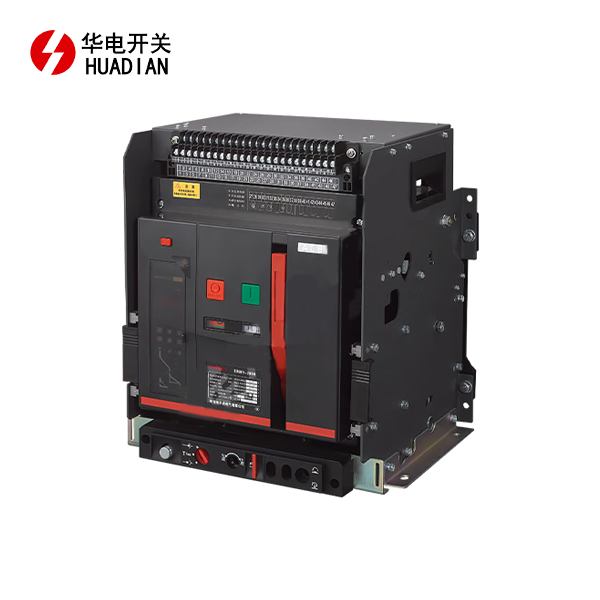The Fundamentals of Universal Circuit Breakers
Understanding the Core Functions
Universal circuit breakers are sophisticated devices engineered to monitor and control electrical currents. Their primary function is to detect abnormalities in the electrical flow and swiftly interrupt the circuit to prevent damage. These breakers are designed to handle a wide range of voltages and currents, making them versatile for various applications. They operate on the principle of electromagnetic or thermal-magnetic tripping mechanisms, which respond to overcurrents or short circuits by automatically opening the circuit.
Key Components and Their Roles
The anatomy of a universal circuit breaker includes several critical components. The main contacts are responsible for carrying and interrupting the current flow. The operating mechanism facilitates the opening and closing of these contacts. The trip unit, which can be thermal, magnetic, or electronic, detects fault conditions and initiates the tripping action. Arc chutes are incorporated to extinguish the arc that forms when the contacts separate under load. Understanding these components is crucial for appreciating the breaker's functionality and reliability.
Types of Universal Circuit Breakers
Universal circuit breakers come in various types, each designed for specific applications. Miniature circuit breakers (MCBs) are commonly used in residential and light commercial settings. Molded case circuit breakers (MCCBs) are more robust and suitable for industrial applications. Air circuit breakers (ACBs) are used in high-current applications. Each type offers unique features and capabilities, catering to different voltage ranges, interrupting capacities, and environmental conditions. The diversity in types ensures that there's a suitable universal circuit breaker for every electrical system requirement.
Applications and Advantages of Universal Circuit Breakers
Versatility Across Different Sectors
The adaptability of universal circuit breakers makes them indispensable in various sectors. In residential settings, they protect household circuits from overloads caused by appliances. In commercial buildings, they safeguard complex electrical systems that power lighting, HVAC, and office equipment. Industrial applications often require heavy-duty universal circuit breakers to manage high-power machinery and equipment. Their ability to function across different voltage and current ranges allows for standardization in electrical protection systems, simplifying maintenance and replacement processes.
Enhanced Safety Features
Universal circuit breakers incorporate advanced safety features that go beyond basic overcurrent protection. Many models include ground fault protection, which detects current leakage to ground and trips the breaker to prevent electric shock hazards. Arc fault detection is another crucial safety feature, particularly in residential settings, as it can identify and interrupt arcing faults that may lead to fires. These enhanced safety features make universal circuit breakers an essential component in modern electrical safety standards and regulations.
Energy Management and Efficiency
Modern universal circuit breakers often come equipped with smart features that contribute to energy management and efficiency. Some models include built-in power metering capabilities, allowing users to monitor energy consumption in real-time. This data can be invaluable for identifying energy-intensive equipment or processes, enabling more informed decisions about energy usage. Additionally, the precise tripping characteristics of universal circuit breakers help minimize nuisance trips, ensuring continuous operation of critical systems while maintaining optimal protection levels.
Selecting and Maintaining Universal Circuit Breakers
Factors to Consider in Selection
Choosing the right universal circuit breaker requires careful consideration of several factors. The voltage rating must match the system voltage, while the current rating should be appropriate for the expected load. The interrupting capacity, which indicates the maximum fault current the breaker can safely interrupt, is crucial for ensuring adequate protection. Environmental factors such as temperature, humidity, and exposure to contaminants should also be considered. Additionally, the specific application requirements, such as the need for remote operation or integration with building management systems, can influence the selection process.
Installation Best Practices
Proper installation of universal circuit breakers is essential for their effective operation and longevity. This process involves ensuring correct mounting and alignment, proper torquing of connections to prevent loose contacts, and adherence to manufacturer guidelines for clearances and ventilation. It's crucial to verify the compatibility of the breaker with the existing electrical infrastructure and to conduct thorough testing post-installation. Proper labeling and documentation of the installed breakers are also important for future maintenance and troubleshooting.
Maintenance and Testing Protocols
Regular maintenance is vital for ensuring the continued reliability of universal circuit breakers. This includes visual inspections for signs of wear or damage, cleaning of contacts and mechanisms, and tightening of connections. Periodic testing of the breaker's functionality, including its tripping mechanism and time-current characteristics, is essential. Many modern universal circuit breakers come with self-diagnostic features that can alert maintenance personnel to potential issues before they become critical. Adhering to a comprehensive maintenance schedule not only extends the life of the breaker but also ensures the safety and reliability of the entire electrical system.
Conclusion
Universal circuit breakers are pivotal in ensuring the safety and efficiency of electrical systems across various sectors. Their adaptability, advanced safety features, and contribution to energy management make them indispensable in modern electrical infrastructure. As technology continues to evolve, universal circuit breakers are likely to incorporate even more sophisticated features, further enhancing their role in electrical protection and energy management. Understanding their functions, applications, and maintenance requirements is crucial for electrical professionals and facility managers to maximize the benefits of these versatile devices and ensure the longevity and reliability of electrical systems.
Contact Us
For more information about our high-quality universal circuit breakers and other electrical products, please contact Shaanxi Huadian Electric Co., Ltd. at austinyang@hdswitchgear.com/rexwang@hdswitchgear.com/pannie@hdswitchgear.com. Our team of experts is ready to assist you in finding the perfect solution for your electrical protection needs.





